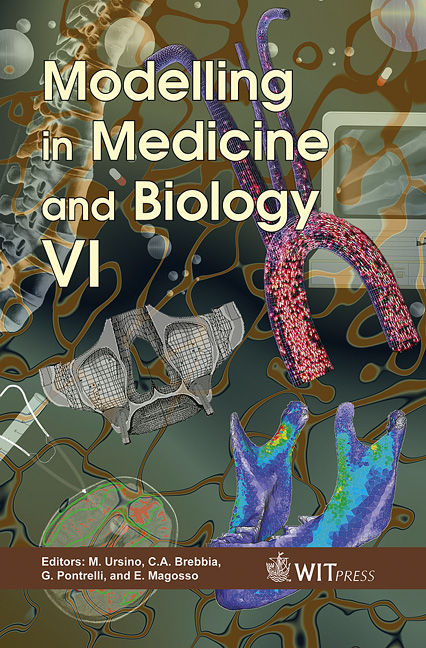Simulation Of Diopter Changes In Radio Frequency Conductive Keratoplasty In The Cornea
Price
Free (open access)
Transaction
Volume
8
Pages
9
Published
2005
Size
468 kb
Paper DOI
10.2495/BIO050451
Copyright
WIT Press
Author(s)
J. Pearce, D. Panescu & S. Thomsen
Abstract
Correction of hyperopia (far-sightedness) is accomplished by decreasing the radius of curvature of the cornea. Radio frequency (RF) current at 350 kHz is presently being used to the required correction. The procedure is termed Conductive Keratoplasty and temperature increases induced by the RF current shrink corneal collagen. Finite difference method (FDM) numerical models of the electric and current density fields, thermal fields, and resulting damage and collagen shrinkage fields have been used to study the effects of electrode voltage and power on transient tissue impedance and diopter change obtained from this process. Water is by far the most thermodynamically active tissue constituent, and must be taken into account in order to obtain realistic results. Thermal damage processes are highly non linear, typically following Arrhenius kinetic rate-limited process formulations, or their equivalent. The FDM model calculations predict water loss and thermal damage in the form of loss of birefringence in corneal collagen, which can be directly compared to histologic section using Transmission Polarizing Microscopy. Numerical model results compare well with experimental measurements and have been used to study the relative importance of the governing physical phenomena and the feasibility of constant power RF activation. Keywords: surgical simulation, cornea, hyperopia correction, radio frequency surgery, needle electrode, numerical models, thermal damage prediction.
Keywords
surgical simulation, cornea, hyperopia correction, radio frequency surgery, needle electrode, numerical models, thermal damage prediction.





